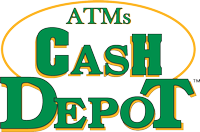 This article is brought to you by Cash Depot.
This article is brought to you by Cash Depot.
Most convenience stores that use smart safes for their cash management usually opt for next-day deposits. Money is deposited into the safe, and the funds collected appear as a credit in the connected bank account the following day.
“But there’s a catch—next-day deposits aren’t real deposits,” said Sean Burke, CEO of Cash Depot. “They are temporary loans, or ‘provisional credit’ given for money that has been recorded but not deposited. And like all loans or credit, there are fees for that money.”
Provisional credit charges daily interest fees for the cash sitting in your smart safe until it is physically picked up and processed. This typically takes up to nine days and can cost $250-$300 per site, per month for the average retailer depending on their weekly deposits, according to data collected from Cash Depot partners.
In order to provide provisional credit to your account, some smart safe companies have to partner with your bank. “So, while they might say they aren’t charging you the provisional credit fees, but that just means those charges are coming separately from your bank,” Burke explained.
A traditional cash recycling system will fall under the same provisional credit umbrella—unless you’re using BANK IN A BOX.
“Cash Depot’s BANK IN A BOX doesn’t charge you for those nine days of static cash because the money you put in the machine isn’t waiting to go to the bank for processing,” said Burke. “It’s being verified, recorded and recycled right back into the consumer payment system, which eliminates the bank as the middleman.”
Because the recycled cash is used for ATM withdrawals and re-entering the consumer cash ecosystem, the money isn’t left sitting in a back office, incurring additional fees.
“With BANK IN A BOX you get credited for money dispensed out to your ATM users, and your next day deposit cost is calculated as a flat fee based on the final total at the end of the day. So, if you deposit $5,000 but customers withdraw $3,000 from your ATM, you only pay a fee on the remaining $2,000,” Burke explained. “This can save retailers a significant amount of money on monthly costs, while also providing a necessary service to customers.”
The ATM feature can not only cut down on next-day deposit fees, but it can also generate revenue for operators. “Around 20% of the cash dispensed at an ATM is spent in the store where it was withdrawn. So, with BANK IN A BOX, much of the cash being spent is the same cash the store deposited,” Burke said.
Consumers are also drawn to ATMs that use multiple denominations, he added. “Retailers can increase ATM transactions by an average of 2-3% by offering more than $20 bills, which BANK IN A BOX can do. Even large banks like Chase and PNC are upgrading their machines to offer $1 and $5 bills.”
This is part one of a two-part series brought to you by Cash Depot. Look for part two on the costs of smart safes on Thursday.